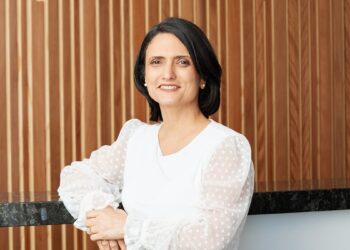Div 296 has created an imperative for everyone working in the self-managed superannuation fund space to rethink how they are looking after clients with a balance above the $3 million threshold.
One such consideration that has received particular attention recently is around deferred tax accounting, however Lyn Formica, head of education and content for Heffron, said she “doesn’t necessarily agree” that turning on deferred tax accounting should be the default position.
“There can be a lot of ramifications of turning tax effect accounting on if it’s not something that you already do,” Formica said on a Heffron and Class webinar last week, adding that generally this commentary is around its interaction with Div 296.
“As a general rule, when we’re doing a provision for deferred tax accounting, we’re recognising a liability for the tax which would be payable on our unrealised capital gains if those assets were sold at year end,” she explained.
“Conversely, if we’re in a loss position, then we might be raising an deferred tax asset. Generally speaking, SMSFs are not doing general purpose financial statements, in which case, whether or not we do deferred tax accounting is essentially at trustee discretion.
“So, it’s a choice as to whether we do it or not. If we are going to do it, we need to make sure that our accounting policy note reflects what we are actually doing there.”
While Formica said Heffron does not generally employ deferred tax accounting, she acknowledged there are a number of reasons an adviser or client may want to calculate their tax liability this way, such as to ensure tax on unrealised gains have been reflected in financial statements during a divorce situation.
When it comes to the $3 million super tax, the reasoning is that when an asset is increasing in value, deferred tax accounting would recognise the tax payable if the asset were sold on 30 June, which raises a tax liability provision for deferred tax in the balance sheet.
“The consequence of that, if we’ve got let’s say property is our asset and it’s growing in value. As we recognise our provision for deferred tax, we’re going to be decreasing our funds earnings each year, and our member balances are going to be lower at the end of each year,” Formica said.
“If our goal is to have lower member balances, that might be a good thing.”
The benefits for this under Division 296, which imposes an additional 15 per cent tax on the earnings attributable to a member balance above $3 million and is calculated based on the total super balance, seem like a no brainer.
However, Formica explained that while there is certainly a benefit on the surface, the ultimate calculation of its usefulness is not quite so straightforward.
“If we’re consistently including a provision for deferred tax in our financials, that’s going to reduce our Div 296 tax, because each year, earnings are going to be slightly lower. Our earnings are going to be growth less the tax associated with that growth, so our member balance at year end is going to be lower,” she said.
“The consequence of that is that our Div 296 tax is going to be lower.”
Where things get complicated are when the asset is sold and the capital gains is actually realised.
“When we sell [the asset] after 10 years, the year we sell it we’ve got a big capital gains tax bill in the fund. So, earnings are lower and our Div 296 tax is lower,” Formica said.
Under deferred tax accounting, however, every year there would be a slightly smaller amount of Div 296 tax up until that 10th year when the fund would not get the drop off because the capital gains has already been accounted for along the way.
“If I did the sums and showed you what the net difference of that would be, you’d find that it’s just a timing difference,” she explained.
“In year 10, we got back all of the benefit of having done the deferred tax accounting – we were basically line ball. It made no difference after 10 years having done deferred tax accounting or not, very simplistically.”
Importantly, Formica added, there are a whole host of other factors at play in each individual circumstances that could result in one method or the other being more beneficial, but it is clear there is no “one size fits all approach”.
“I think it needs to be on a case-by-case basis, depending on what you are trying to achieve for a particular client,” she said.
“Either way, I’d be checking your reasons for why you’re turning it on or you’re turning it off. If the sole or dominant purpose of doing that is to reduce or avoid Div 296 tax or any tax, then remember that that could be considered a scheme under part 4A, so just be very careful.
“Try to think about it from a non-tax perspective.”



Part IVA ITAA 1936 is not applicable as Div 296 is not covered by it.
I think that deferred tax accounting is very reasonable ,it’s an accounting standard and certainly provides a truer value of the fund . If by chance retirement or a pension is close it may only have limited effect .
The ATO would be hard pressed to call it a scheme given that most members, I would think, only found out about Deferred Tax Accounting because of Div 296 being publicised. Accounting for it on the Balance Ssheet gives a far better indication of the true members’ balance if they withdrew or rolled over their superannuation, which I would think was the aim of a Balance Sheet. That is, for it to be an accurate reflection of the true worth of the funds in trust available to the member upon withdrawal.
Net sum game may be the end result but it is also important the impact on annual cashflow. Div 296 must be paid annually and in many cases, it will be drawn from super. Less cash out, more available for investment.
Cashflow is always important in managing investment assets and TDA is a tool to help smooth somewhat
Serious consideration needs to be given to the recognition criteria under the tax effect accounting standard BEFORE adopting.
For example, realising a provision for deferred tax must be “beyond reasonable doubt”. For a pension only fund, such a provision might never be realised, even after death. Then the dominant purpose of such a provision in a pension fund can only be illegal avoidance of Div 296 tax.
Before kids in accounting firms around the country start flicking switches indiscriminately careful consideration is required. Once implemented, the dominant software systems also raise future tax benefits, often inappropriately.
The criteria for recognition of future tax benefit assets is “virtually certain” , a much higher standard than “ reasonable doubt”. Software cannot know that and manual intervention may be required, if possible.
Accountants around the country need to give careful consideration to how complicit they want to be in avoiding division 296 by adopting tax effect accounting. Don’t let your kids go flicking switches without a case by case examination.